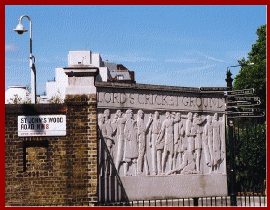| ||||||||||||||||||||||||||||
Welcome to the | ||||||||||||||||||||||||||||
 | ||||||||||||||||||||||||||||
 | ||||||||||||||||||||||||||||
CCTV CameraPerformance - Exposure Control
The interesting part of Electronic Iris (EI) exposure control, is that in practice, the amount of light actually landing on the imager is not varied. So the options for controlling exposure in a modern CCTV camera are:- a) to manually set a lens iris for the ambient light level, provided of course it is going to remain constant, At this point, a little needs to be explained about the hidden benefit of using Electronic Iris, to produce really stunning quality images. If the camera is located in an area where the light level is likely to vary throughout the day, then EI can provide a key improvement over the conventional use of 'auto iris' (AI) lenses. With a standard AI lens, the camera will always be sampling images at the normal scanning system rate (i.e. 1/50th or 1/60th of a second), depending on the country where the equipment is in use. Now, if the images contain a reasonable degree of movement, either people walking or running swiftly past the camera, or vehicles travelling at speed, the resultant video playback can show varying degrees of blurring in the image, which can frequently obscure vital information . With a camera using the Electronic Iris function to control exposure, images will be captured at varying speeds dependant on the ambient light level, so under the darkest of conditions, the sampling rate will almost certainly be 1/50th (1/60th) of a second, with no major technical advantage, save for possibly better lens performance, and lower unit cost. However, when the light level improves and the camera starts to sample images in 1/1000ths of a second, there is a very marked improvement in the appearance of moving targets. The images are no longer blurred, but instead appear crisp and very, very sharp. | ||||||||||||||||||||||||||||
 | ||||||||||||||||||||||||||||
IMPORTANT: No material may be reproduced, copied or redistributed from this site, © doktorjon.co.uk 2004 - 2008 Homepage...:...Gateway...:...Technical Gateway....:....Quickfind Index....:....Equipment Directory | ||||||||||||||||||||||||||||

